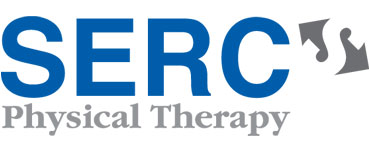What is Aquatic Therapy?
Aquatic physical therapy is the use of skilled physical therapy in an aquatic environment. The unique properties of water can enhance interventions for many injuries including orthopedic, neurologic, skin, and cardiovascular conditions. These properties include:
- Buoyancy: The buoyancy of water absorbs most of the pressure that our body weight puts on our joints.
- Hydrostatic Pressure: The hydrostatic pressure of water can reduce swelling, increase blood flow, and increase lymphatic flow to enhance healing
- Accommodative Resistance: The resistance of water can be used to vary and progress strengthening exercises.
Benefits
Aquatic therapy interventions can improve or maintain:
- Function
- Endurance
- Balance, coordination, and agility
- Flexibility
- Gait
- Muscle strength
Aquatic therapy is commonly used for patients:
- To allow walking for patients who cannot fully weight bear
- Who need to work on sports specific activities (i.e.- running, jumping) but cannot tolerate high impact activities
- Are recovering from surgery
- Are experiencing acute back pain that cannot tolerate standing and walking
- That are athletes who need a controlled environment to complete sport-specific drills.
Common Diagnoses
Common Conditions benefitting from Aquatic Therapy:
- Arthritis
- Ankle Injuries
- Chronic pain
- Fibromyalgia
- Balance conditions
- Joint Replacements
- Knee Injuries
- Low Back Pain
- Neurological Disorders
- Post-surgical rehabilitation
- Shoulder conditions
- Sports and work related injuries
Your physical therapist will complete an evaluation and create a specific aquatic program tailored for you.
*Services are not available at all locations. Call or click the location page near you for that center’s services.
Ankle Pain
Learn MoreBack Pain
Learn MoreChronic Pain
Learn MoreGeneral Weakness
Learn MoreKnee Pain
Learn MoreShoulder Pain
Learn MoreWhat to Expect
Every patient has a unique health history, diagnosis and personal goals. When you come for your first appointment, we will create a personalized treatment plan for you.
We work with most major insurance providers and do our best to help keep the paperwork pain-free. If you’d like to confirm your insurance coverage, please let us know and we can verify when you schedule. If your insurance provider requires a co-pay, we will ask for this payment at each visit. We accept payments by cash, check or credit card.
When to Arrive
On average, a patient’s first visit lasts about an hour. We typically ask patients to arrive 15 minutes early to sign-in, complete paperwork and/or change clothes.
What to Bring
On your first visit, you’ll need to bring your physician referral or prescription (if needed), your insurance card, your primary registration forms, your ID or driver’s license and your co-payment (as applicable). If desired, you may bring a change of clothing.
How it Works
During your first visit, your physical therapist will do an initial evaluation and discuss your plan of care. The therapist uses this information to set goals for your continued treatment. Physical therapy goals may include improved movement, strength, endurance and flexibility, as well as decreased pain. Your subsequent visits will focus on treatment that is based on your diagnosis and individualized goals.

